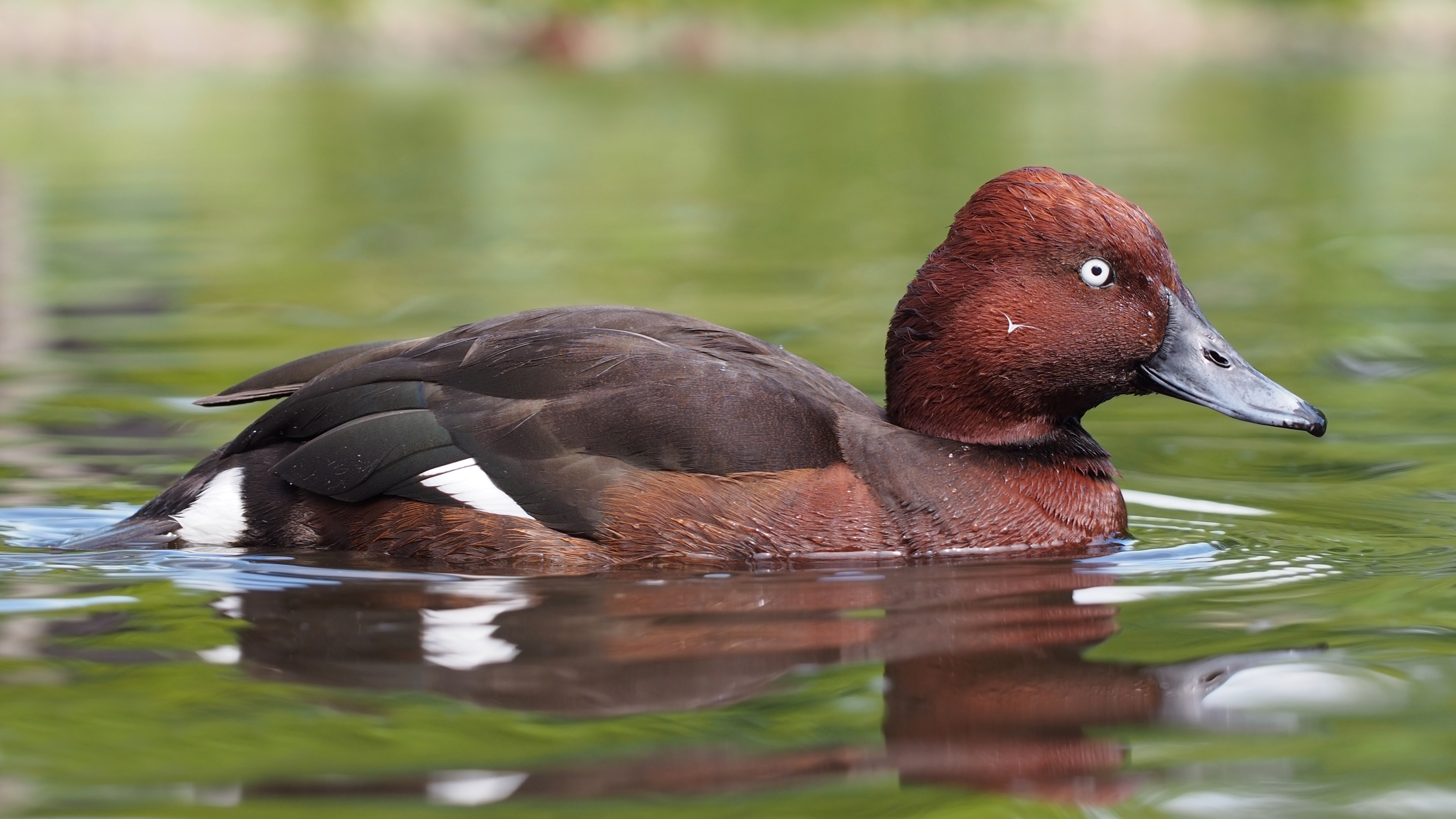Euxine-Colchic Broadleaf Forests
The ecoregion’s land area is provided in units of 1,000 hectares. The conservation target is the Global Safety Net (GSN1) area for the given ecoregion. The protection level indicates the percentage of the GSN goal that is currently protected on a scale of 0-10. N/A means data is not available at this time.
Bioregion: Black Sea, Caucasus-Anatolian Mixed Forests & Steppe (PA17)
Realm: Western Eurasia
Subrealm: Black Sea Forests & Steppe
Ecoregion Size (1000 ha):
7,458
Ecoregion ID:
665
Conservation Target:
50%
Protection Level:
0
States: Turkey, Georgia, Bulgaria
A verdant rainforest blankets the mountains fringing the coastal waters of the Black Sea. Shrouded in mist and interwoven with numerous rushing rivers, the forests are adorned with resplendent meadows brimming with rare and endemic flowers. Bears, lynxes, golden jackals, and wildcats roam this rich wilderness, while the lowland wetlands are graced by thousands of migratory waterfowl, passerines, and raptors.
These lush forests stretch along the southern shoreline of the Black Sea, from the southeasternmost corner of Bulgaria, across the northern coast of Turkey, and into the lowlands of Georgia. The region can be divided into two parts based on climate: the eastern Colchic region is highly humid, with an average annual precipitation of 1,500–2,500 mm, while the western Euxine region is less humid, receiving 1,000–1,500 mm. Multiple rivers traverse this landscape, including the Sakarya, Kızılırmak, Yeşilırmak, and Çoruh, while Georgia’s Paliastomi Lake is one of many wetlands near the shore.
Sand dunes, peatlands, and swampy coastal forests give way to temperate rainforests on the northern slopes of the Pontic Mountains. Oriental beech dominates, accompanied by sweet chestnut, red-twigged lime, oriental hornbeam, black alder, and Caucasian wingnut. The understory is composed of cherry laurel, Colchic holly, and rhododendron. Higher elevations foster coniferous formations, with oriental spruce and Caucasian fir in the east, and Turkish fir in the west.
Many species found refuge in the Colchic region during past glaciations, and their remnant populations survive here today. One such relict species is the endemic Caucasian salamander, an amphibian with a narrow range in the eastern part of the region. Long and slender, with strikingly vivid yellow markings, it inhabits the upper reaches of mountain streams. Other endemic species include the Anatolian crested newt, Turkish smooth newt, and the viper Vipera barani.

Ferruginous duck. Image credit: Francis Franklin, Creative Commons
The coastal lowlands serve as a haven for migratory birds, supporting significant populations of Dalmatian pelicans, pygmy cormorants, white-headed ducks, and ferruginous ducks. Turkey’s Kızılırmak Delta provides sanctuary to three-quarters of the country’s known bird species, while the Kolkheti wetlands in Georgia are internationally recognized for their avian diversity, hosting numerous species of rails, crakes, and herons.
Afforestation of dunes and heathlands with commercial pine trees for the timber industry is common, while native oriental beech, oriental spruce, and red alder are harvested from the forests. The warmth and dampness of Turkey’s coastal fringes make them highly suitable for agriculture; this region is intensively cultivated for rice, corn, sugar beets, tobacco, and tea.
As much as 60% of the original habitat in the Kolkheti wetlands has been reclaimed and cultivated for pastures, agriculture, and horticulture. Strictly protected areas are lacking, especially in Turkey. The Kızılırmak Delta and the wetlands of Central Kolkheti are both designated as Ramsar Sites (Wetlands of International Importance), and Georgia has additional protected areas in Mitrala and Machakhela National Parks.
Rapid urbanization along the Black Sea coast exacerbates human pressures on the ecoregion. The degradation of the remaining wetlands is driven by severe pollution, eutrophication, peat exploitation, and drainage. The Kolkheti wetlands are particularly threatened by operations in the oil industry.
Lowland forests have been heavily logged as forest management strategies prioritize timber production, and logging-related landslides are prevalent. Cross-breeding of local cattle species with imported breeds threatens the loss of native genetic diversity, with almost all local cattle on the Black Sea coastal strip having been replaced by the Jersey breed.
The Society for the Protection of Nature and the Turkish Foundation for Combating Soil Erosion, Reforestation, and the Protection of Natural Habitats are the main organizations promoting nature conservation. They work to create effective management plans for wetlands, implement reforestation projects, and enforce the Pasture Land Law.
Priority conservation actions for the next decade include:
- Creating jobs in sustainable industries to alleviate poverty among local communities and reduce pressure on natural resources.
- Emphasizing reforestation in severely degraded areas and restoring abandoned agricultural lands to forests.
- Restricting logging near streambeds to protect Caucasian salamander populations.
-
-
1. Atalay, I., Efe, R. and Öztürk, M., 2014. Ecology and classification of forests in Turkey. Procedia-Social and Behavioral Sciences, 120, pp.788-805.
2. European Environment Agency (2008). The Black Sea Region – shores and delta. Europe's biodiversity - biogeographical regions and seas.
3. WWF. 2018. Euxine-Colchic broadleaf forests. [Online]. [Accessed 7th June 2019]. Available from: https://www.worldwildlife.org/ecoregions/pa0422 -
Cite this page: Euxine-Colchic Broadleaf Forests. Ecoregion Snapshots: Descriptive Abstracts of the Terrestrial Ecoregions of the World, 2021. Developed by One Earth and RESOLVE. https://www.oneearth.org/ecoregions/euxine-colchic-broadleaf-forests/
-

.png?auto=compress%2Cformat&w=300)

